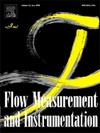钢琴键式堰与矩形迷宫堰的水力特性与能量耗散比较研究
IF 2.3
3区 工程技术
Q2 ENGINEERING, MECHANICAL
引用次数: 0
摘要
对钢琴键堰的流动特性和能量耗散进行了研究,并与矩形迷宫堰进行了比较。尽管pkw作为一种高效的泄洪道结构越来越受到人们的欢迎,但对pkw的水力特性还需要进行更多的研究。利用计算流体力学(CFD)软件进行了数值模拟,并与RLW的实验数据进行了验证。研究结果揭示了pkw中不同的流动模式,倾斜和阶梯式坡道促进了近床流线的平稳疏散,并增强了下游的湍流和加气流动。RLWs和PKWs的水面分布不同,PKWs表现出更均匀和有效的水流分布。研究进一步考察了pkw的能量耗散和剩余能量效率,表明相对能量耗散随着头堰高度比的增加呈非线性下降。与rlw相比,pkw表现出更好的能量耗散,a型pkw优于d型pkw。键宽比是影响能量耗散的关键因素,键宽比越小,耗散率越高。在d型pkw中加入台阶增强了能量消耗,特别是在较低的头部。然而,局部淹没效应减小了高水头pkw之间能量耗散的差异。这些发现有助于更好地了解PKW的水力性能,为优化PKW设计和提高水工结构的成本效益提供有价值的见解。本文章由计算机程序翻译,如有差异,请以英文原文为准。
Hydraulic behavior and energy dissipation in Piano key weirs vs. Rectangular labyrinth weirs: A comparative study
Flow characteristics and energy dissipation of Piano Key Weirs (PKWs) were investigated in this study and compared with rectangular labyrinth weirs (RLWs). Despite their increasing popularity as efficient spillway structures, more research was needed on the hydraulic behavior of PKWs. Numerical simulations using the computational fluid dynamics (CFD) software were conducted, and the results were validated against experimental data for an RLW. The findings revealed distinct flow patterns in PKWs, with sloping and stepped ramps promoting smooth evacuation of near-bed streamlines and enhancing turbulence and aerated flow downstream. Water surface profiles differed between RLWs and PKWs, with PKWs exhibiting a more even and efficient flow distribution. The study further examined energy dissipation and residual energy efficiency in PKWs, showing a nonlinear decrease in relative energy dissipation with increasing head-to-weir height ratios. PKWs demonstrated superior energy dissipation compared to RLWs, with A-type PKWs outperforming D-type PKWs. The width ratio of keys emerges as a crucial factor influencing energy dissipation, with smaller ratios promoting higher energy dissipation rates. Incorporating steps in D-type PKWs enhanced energy dissipation, especially at lower heads. However, local submergence effects reduced the differences in energy dissipation between PKWs at higher heads. These findings contributed to a better understanding of PKW hydraulic performance, providing valuable insights for optimizing PKW designs and enhancing the cost-effectiveness of hydraulic structures.
求助全文
通过发布文献求助,成功后即可免费获取论文全文。
去求助
来源期刊

Flow Measurement and Instrumentation
工程技术-工程:机械
CiteScore
4.30
自引率
13.60%
发文量
123
审稿时长
6 months
期刊介绍:
Flow Measurement and Instrumentation is dedicated to disseminating the latest research results on all aspects of flow measurement, in both closed conduits and open channels. The design of flow measurement systems involves a wide variety of multidisciplinary activities including modelling the flow sensor, the fluid flow and the sensor/fluid interactions through the use of computation techniques; the development of advanced transducer systems and their associated signal processing and the laboratory and field assessment of the overall system under ideal and disturbed conditions.
FMI is the essential forum for critical information exchange, and contributions are particularly encouraged in the following areas of interest:
Modelling: the application of mathematical and computational modelling to the interaction of fluid dynamics with flowmeters, including flowmeter behaviour, improved flowmeter design and installation problems. Application of CAD/CAE techniques to flowmeter modelling are eligible.
Design and development: the detailed design of the flowmeter head and/or signal processing aspects of novel flowmeters. Emphasis is given to papers identifying new sensor configurations, multisensor flow measurement systems, non-intrusive flow metering techniques and the application of microelectronic techniques in smart or intelligent systems.
Calibration techniques: including descriptions of new or existing calibration facilities and techniques, calibration data from different flowmeter types, and calibration intercomparison data from different laboratories.
Installation effect data: dealing with the effects of non-ideal flow conditions on flowmeters. Papers combining a theoretical understanding of flowmeter behaviour with experimental work are particularly welcome.
 求助内容:
求助内容: 应助结果提醒方式:
应助结果提醒方式:


